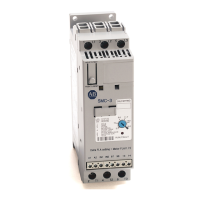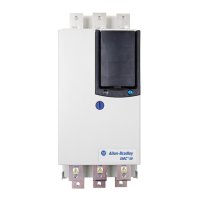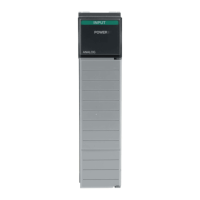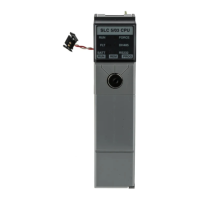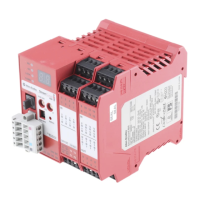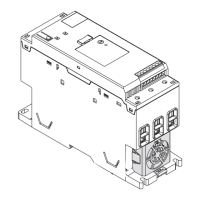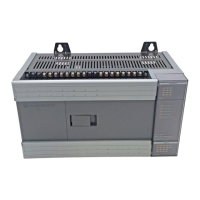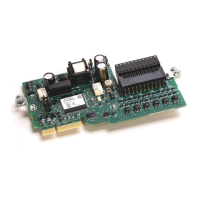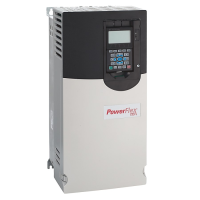
Do you have a question about the Allen-Bradley SoftLogix 5800 and is the answer not in the manual?
| Model | SoftLogix 5800 |
|---|---|
| Programming Environment | RSLogix 5000 |
| Operating System | Windows |
| Communication Protocols | EtherNet/IP |
| Communication Ports | Ethernet |
| Processor Type | Intel-compatible PC processor (performance depends on PC hardware) |
Read documents, use trained personnel, understand liability and product usage.
Document contains new and updated information, look for change bars.
Table represents major topics with changes, check change bars.
Determines available slots in virtual chassis and installable devices.
Prerequisites and essential software needed before installation.
Steps to install the SoftLogix 5800 controller software on a computer.
Manages software activations, covering node-locked and concurrent types.
Steps to configure the virtual-backplane driver required for SoftLogix operation.
Overview of features and components of a SoftLogix system.
Guide to configuring and monitoring system components via the Chassis Monitor.
Steps to create and configure the controller in the virtual chassis monitor.
Allocate RAM for controller and configure periodic save task for system performance.
Explains execution model, program development, and task scheduling/priority.
Details system connections for I/O, messages, tags, and overall requirements.
Procedures for restarting, going online, and uploading projects to the controller.
Configures the percentage of controller time for communication and background functions.
Requirements for SoftLogix controller to operate on an EtherNet/IP network.
Install, configure multiple modules, manage connections, and domain interactions.
Supports distributed I/O over EtherNet/IP and shows typical network configuration order.
Describes Ethernet I/O tag structure and steps to add a remote controller.
Creating consumed tags and viewing EtherNet/IP module statistics.
Illustrates remote connection, message sending, PLC-5 communication, and distributed I/O control.
Requirements for operating SoftLogix with a serial device.
Serial port settings, protocols (DF1, ASCII), examples, and modes.
Describes the RS-232 status indicator behavior for the SoftLogix controller.
Illustrates direct connection, remote connection, and bar code reader communication.
Requirements for simulating local I/O using a 1789-SIM module.
Assigning I/O data and interacting with simulated I/O bits.
Forcing bits and copying application data to simulated I/O tags.
Steps to add and call external routines using JXR instruction.
Adding external routine to organizer and calling it via JXR instruction.
Details parameters for JXR instruction and type checking rules.
Flexible capability of external routines, execution process, and potential risks.
Process for creating, building, downloading, updating, and managing external routines and their DLLs.
Setting up debug sessions, breakpoints, and using Visual Studio debugger.
Supported data types, C++ export style, and XML resource for routine descriptions.
Suggestions for external routines, including passing tags by reference and DLL dependencies.
Using outbound events in asynchronous routines to detect controller mode changes.
Creating and configuring a task triggered by Windows events in the controller.
Saving controller information programmatically using pre-defined Windows events.
Using Windows API functions to open and set Windows events in the controller.
Requirements for operating SoftLogix on a DeviceNet network.
Steps for testing DeviceNet communication, configuring ports, views, and I/O.
Describes I/O data format, card modes, status registers, and data elements.
Illustrates SoftLogix controller with DeviceNet I/O and creating alias tags for I/O points.
Requirements for operating SoftLogix on a ControlNet network.
Describes ControlNet I/O tag structure and module property tab configurations.
Adding and configuring remote adapters and I/O modules for ControlNet.
Downloading project to controller and scheduling the ControlNet network using RSNetWorx.
Illustrates controller to I/O, controller to controller, other devices, and gateway configurations.
Configuring MSG instructions and setting up produce/consume tags for ControlNet.
Overview of virtual motion, requirements, and initial setup steps.
Configuring axes, motion instructions, and handling motion faults.
Impact of Windows System Restore feature on SoftLogix motion applications.
Understanding ISRs, DPCs, Threads, and other OS factors affecting SoftLogix.
Running SoftLogix, dwell time, periodic tasks, timeslice, and multi-controller efficiency.
HMI interaction and PC hardware requirements for optimal SoftLogix performance.
Verifying system performance using TestTime utility and checking PC compatibility.
Tuning parameters like dwell time, save interval, CPU affinity, and connections for performance.
Managing system startup demands and using performance monitoring tools.
Details the RUN, I/O, FRC, RS232, BAT, and OK indicators on the controller.
Describes LINK, NET, and OK indicators for EtherNet/IP modules.
Explains the status and display of RUN, I/O, FRC, RS232, BAT, and OK indicators.
Describes the LINK indicator states and their meanings for Ethernet modules.
Describes the NET indicator states for CIP connections and network status.
Describes the OK indicator states for module operation and faults.
Release notes for SoftLogix 5800 Version 23, coinciding with Studio 5000 Designer v23.
Release notes for SoftLogix 5800 Version 21, noting replacement of RSLogix software.
Release notes for SoftLogix 5800 Version 20, including TOC redesign and RSLinx module flexibility.
